Following the capitulation of Italy, teaching in the Slovene language began to be reintroduced in Primorska in so-called Partisan schools. These were formed in various ways, either spontaneously, when teachers started teaching on their own initiative, or in organised fashion, when founded by Liberation Front committees on the instructions of the National Liberation Council for the Slovene Littoral. In some areas children were taught by priests, if the presence of the occupying forces made it impossible to open a school.
Evening classes were also introduced. These were attended by young people over the age of 14 who had completed Italian schooling and now wished to perfect their knowledge of Slovene. Supplying teachers and ensuring the normal provision of lessons was the responsibility of parents’ councils.
The school programme lasted for two academic years except in Slovene Istria, where conditions did not allow this. Teachers were given guidelines on teaching methods by a regional school inspector. In most cases lessons took place in private houses, because the occupying forces had either burnt schools down or commandeered them for their own purposes. The lack of teaching staff was a major problem, since few teachers were available – and none at all in Slovene Istria. In order to get round this problem, local young women taught in schools, and lessons were extremely simplified. The emphasis everywhere was on instructing students in the spirit of the Liberation Front.
Between 1943 and 1945 a total of 164 Partisan schools operated in the area covered here.
 Marica Čepe, alias Eva, first school inspector in the Brkini district.
Marica Čepe, alias Eva, first school inspector in the Brkini district.
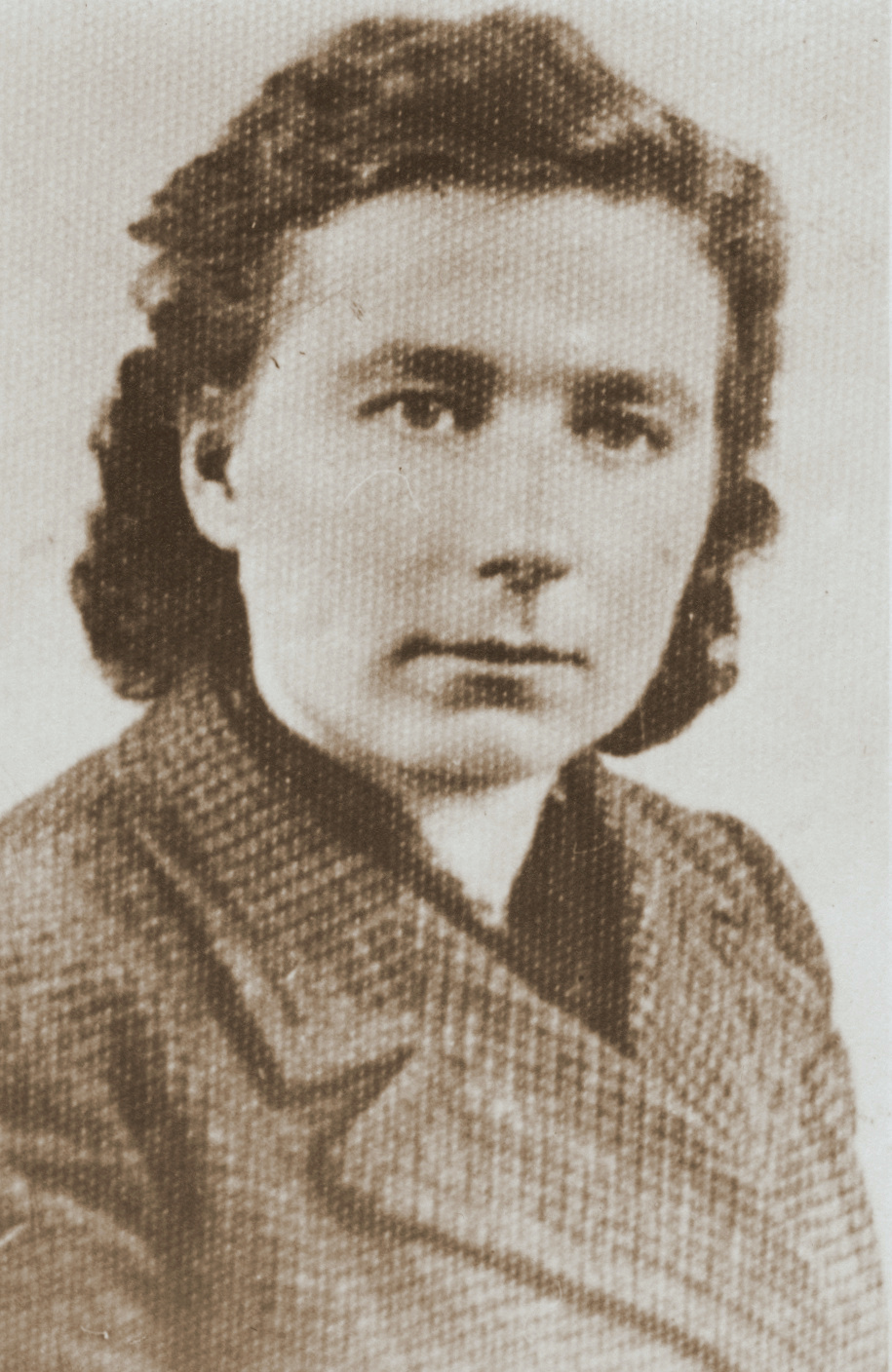 Breda Preinfalk, organiser of Partisan schools in Slovene Istria and first school inspector.
Breda Preinfalk, organiser of Partisan schools in Slovene Istria and first school inspector.
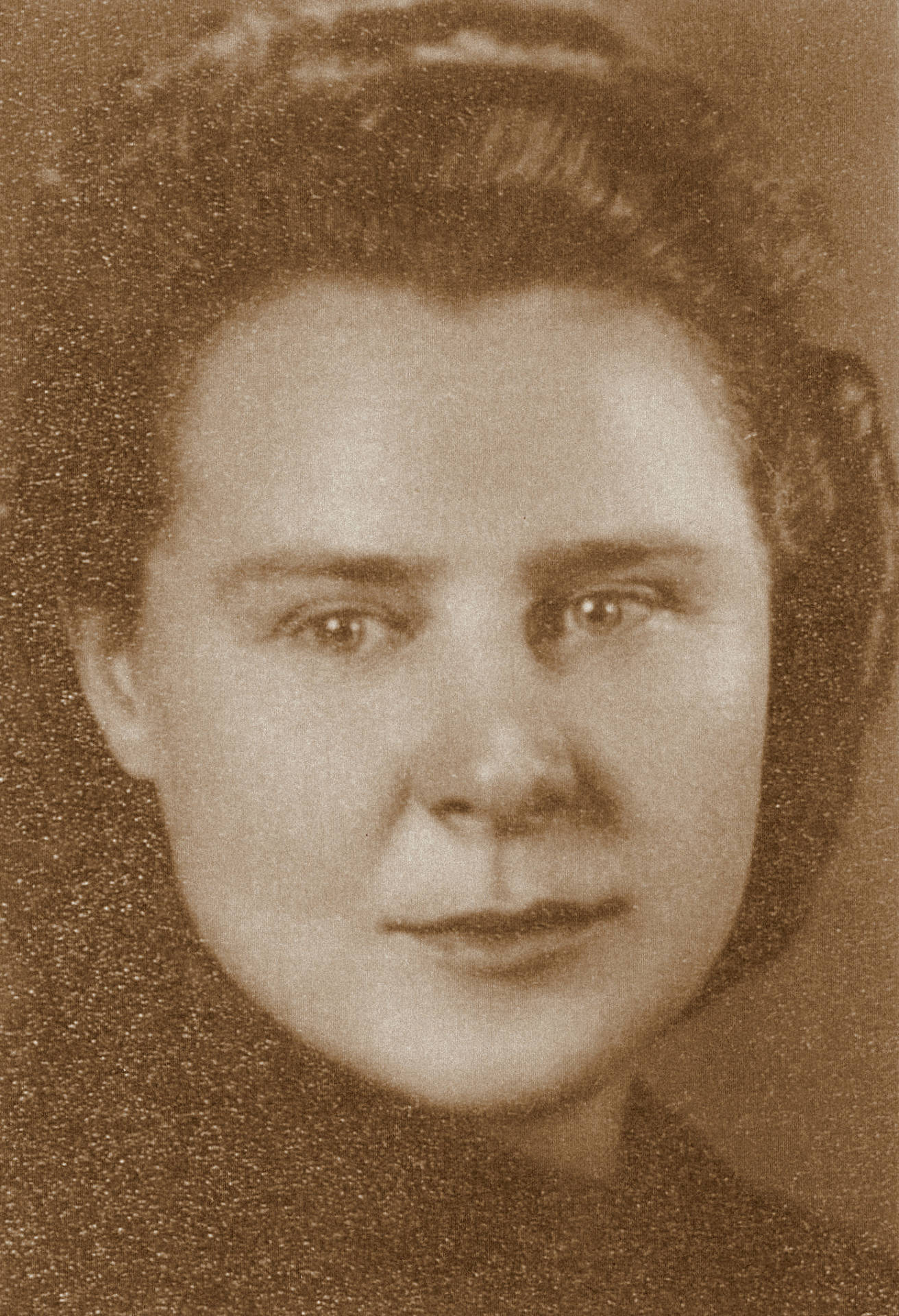 Zora Šerbak, alias Magda, first school inspector in the wider Southern Primorska district.
Zora Šerbak, alias Magda, first school inspector in the wider Southern Primorska district.
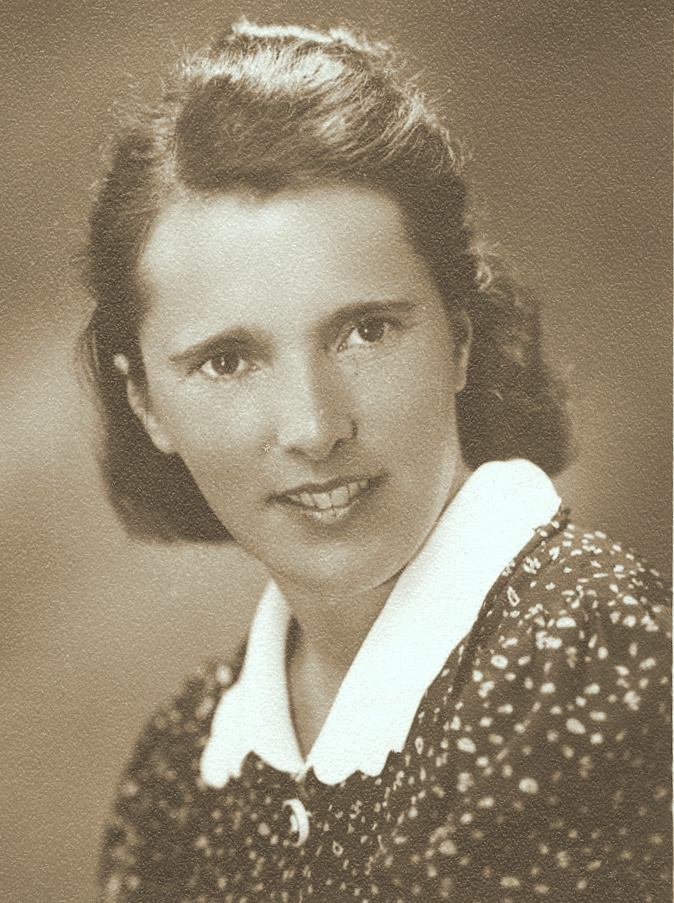 Marija Majnik, alias Majda, last school inspector in the wider Southern Primorska district.
Marija Majnik, alias Majda, last school inspector in the wider Southern Primorska district.
 Schoolteacher Sonja Dekleva Bregant with the cast of a school play she produced herself. The pupils performed the play at the school in Divača in 1944.
Schoolteacher Sonja Dekleva Bregant with the cast of a school play she produced herself. The pupils performed the play at the school in Divača in 1944.
 Schoolteacher Sonja Dekleva Bregant with the cast of a school play she produced herself. The pupils performed the play at the school in Divača in 1944.
Schoolteacher Sonja Dekleva Bregant with the cast of a school play she produced herself. The pupils performed the play at the school in Divača in 1944.
 Choral recital by the pupils of the Simon Gregorčič School in Košana at the end of the first school year.
Choral recital by the pupils of the Simon Gregorčič School in Košana at the end of the first school year.
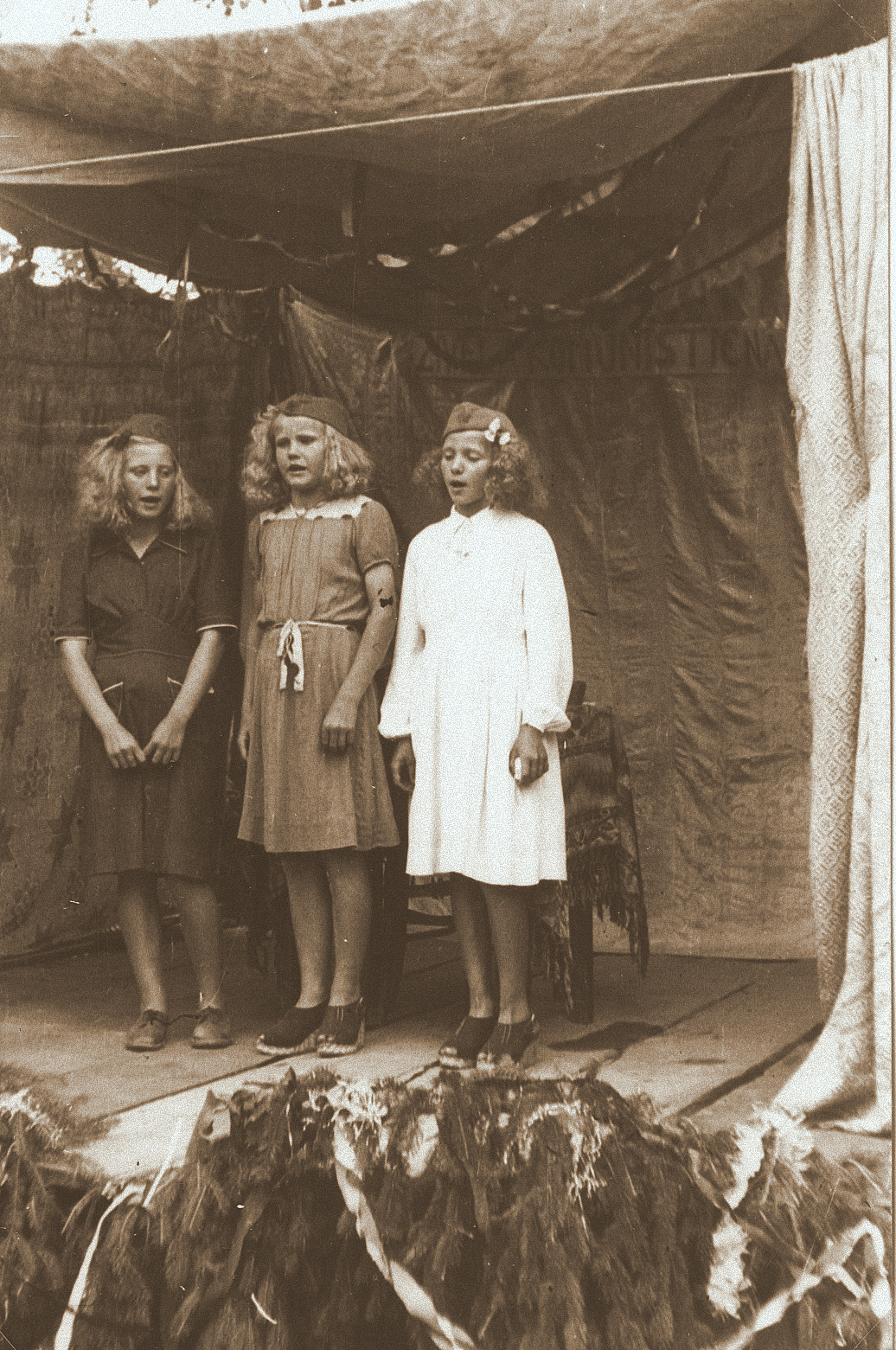 Rjavče, summer 1944. Schoolchildren also appeared at cultural and political events known as “meetings”.
Rjavče, summer 1944. Schoolchildren also appeared at cultural and political events known as “meetings”.
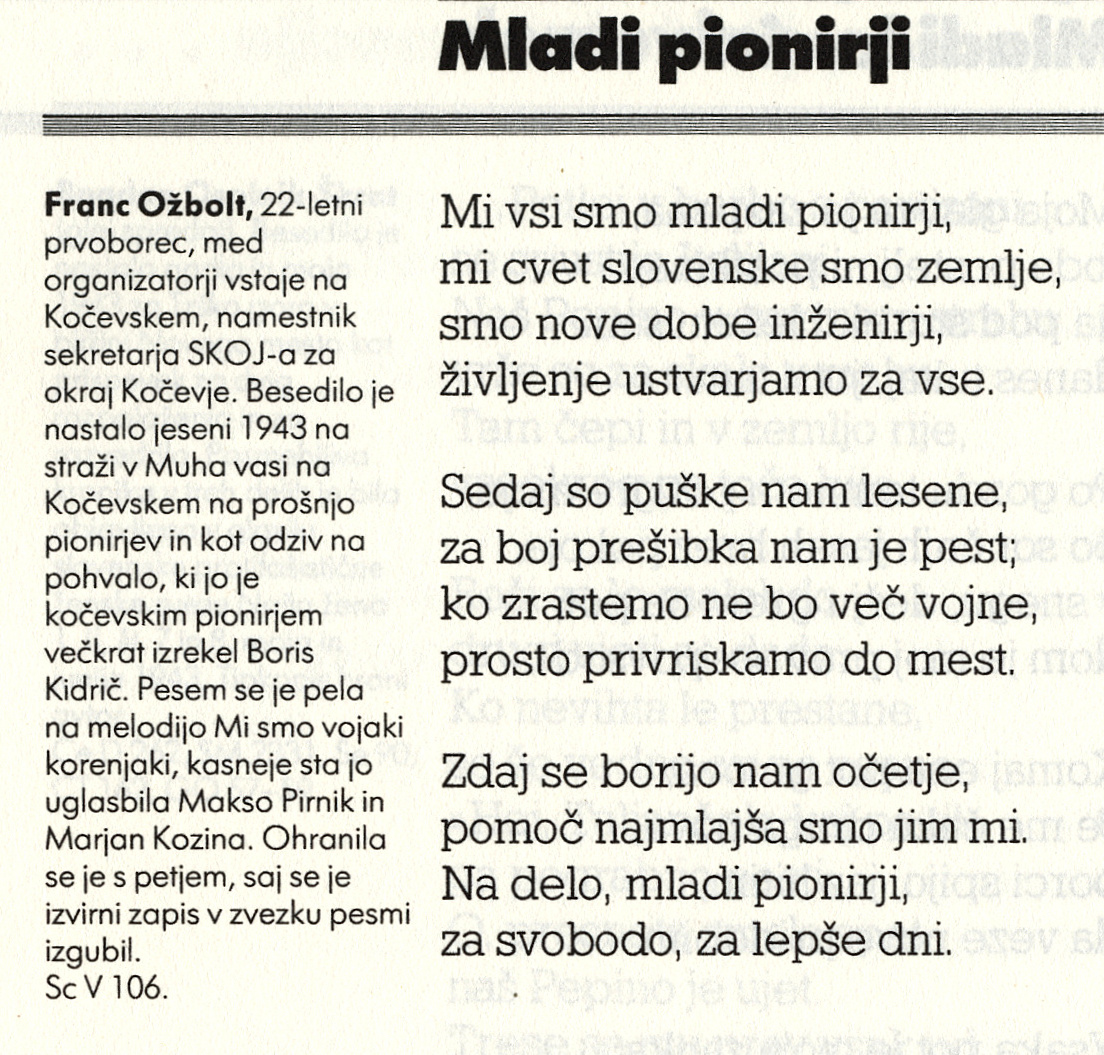 The anthem of the Slovene pioneers (members of the Communist children’s movement) was created in 1943. Pioneers were schoolchildren aged 7 to 14. The leaders of the pioneer organisation were teachers or young Communists. The pioneers were very active. They took part in cultural events and also acted as couriers, informants and sentries.
The anthem of the Slovene pioneers (members of the Communist children’s movement) was created in 1943. Pioneers were schoolchildren aged 7 to 14. The leaders of the pioneer organisation were teachers or young Communists. The pioneers were very active. They took part in cultural events and also acted as couriers, informants and sentries.
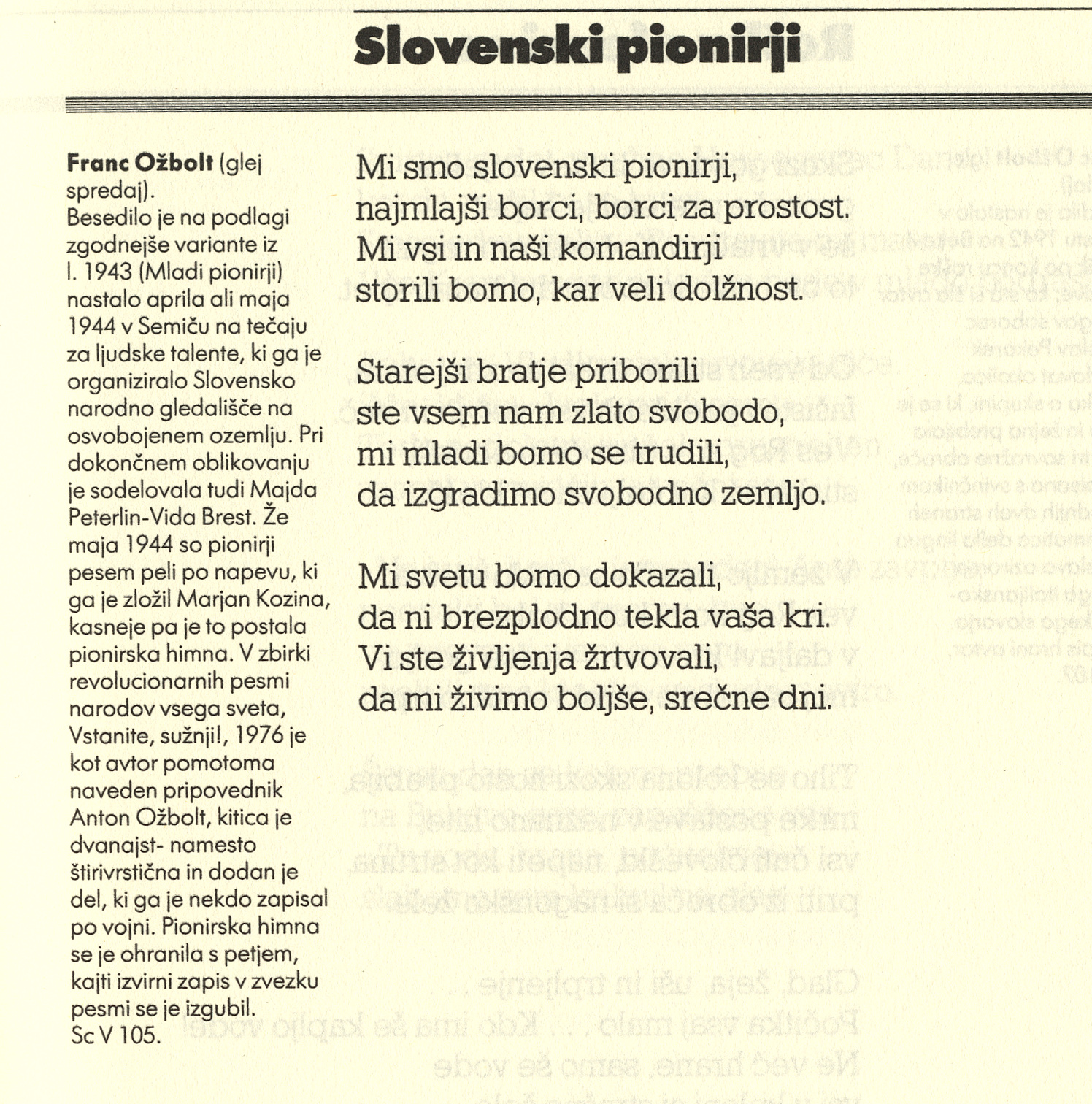 The anthem of the Slovene pioneers (members of the Communist children’s movement) was created in 1943. Pioneers were schoolchildren aged 7 to 14. The leaders of the pioneer organisation were teachers or young Communists. The pioneers were very active. They took part in cultural events and also acted as couriers, informants and sentries.
The anthem of the Slovene pioneers (members of the Communist children’s movement) was created in 1943. Pioneers were schoolchildren aged 7 to 14. The leaders of the pioneer organisation were teachers or young Communists. The pioneers were very active. They took part in cultural events and also acted as couriers, informants and sentries.
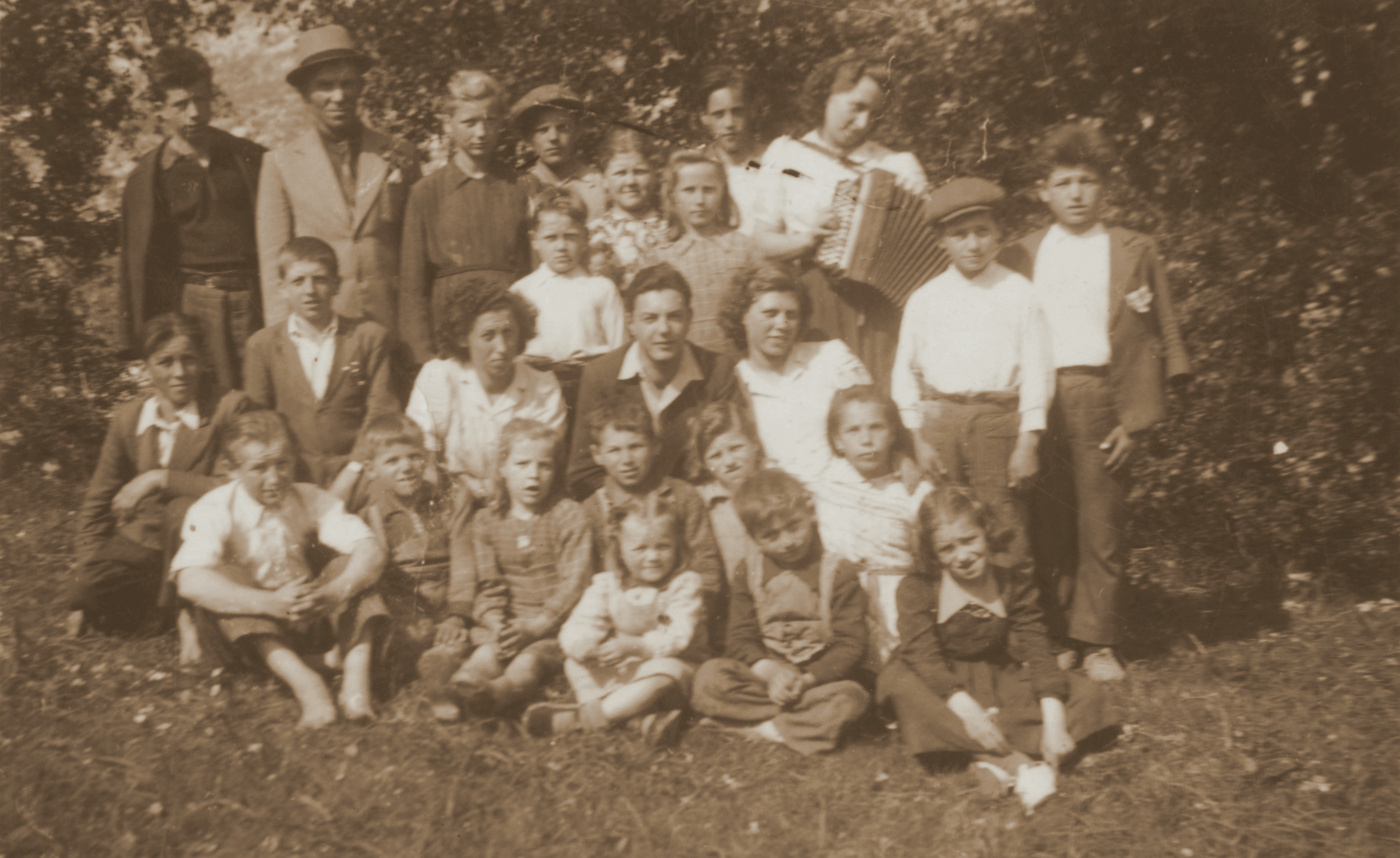
 From the letter of educational supervisor for Primorska France Bevk to the region’s teachers in the autumn of 1943.
From the letter of educational supervisor for Primorska France Bevk to the region’s teachers in the autumn of 1943.
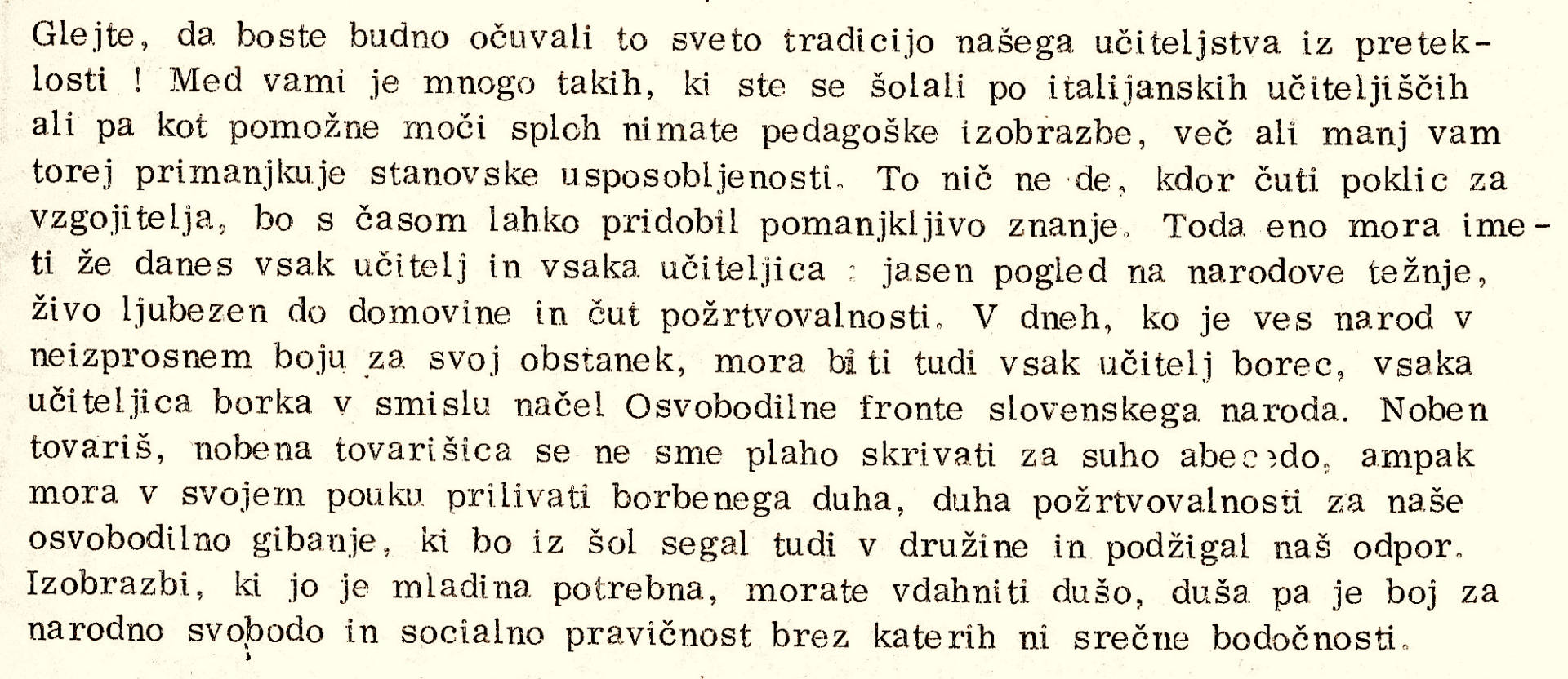 From the letter of educational supervisor for Primorska France Bevk to the region’s teachers in the autumn of 1943.
From the letter of educational supervisor for Primorska France Bevk to the region’s teachers in the autumn of 1943.


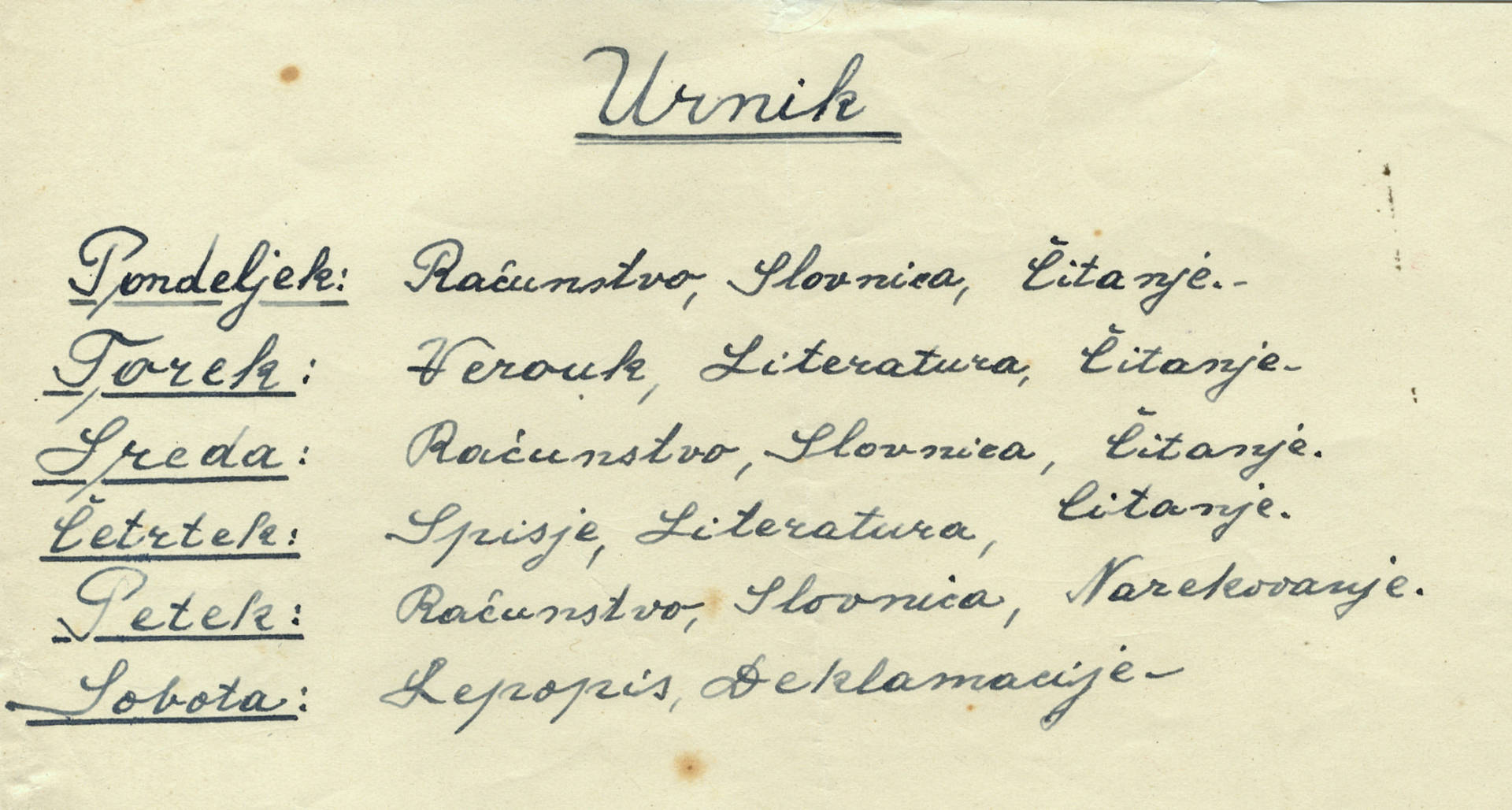 School timetable.
School timetable.
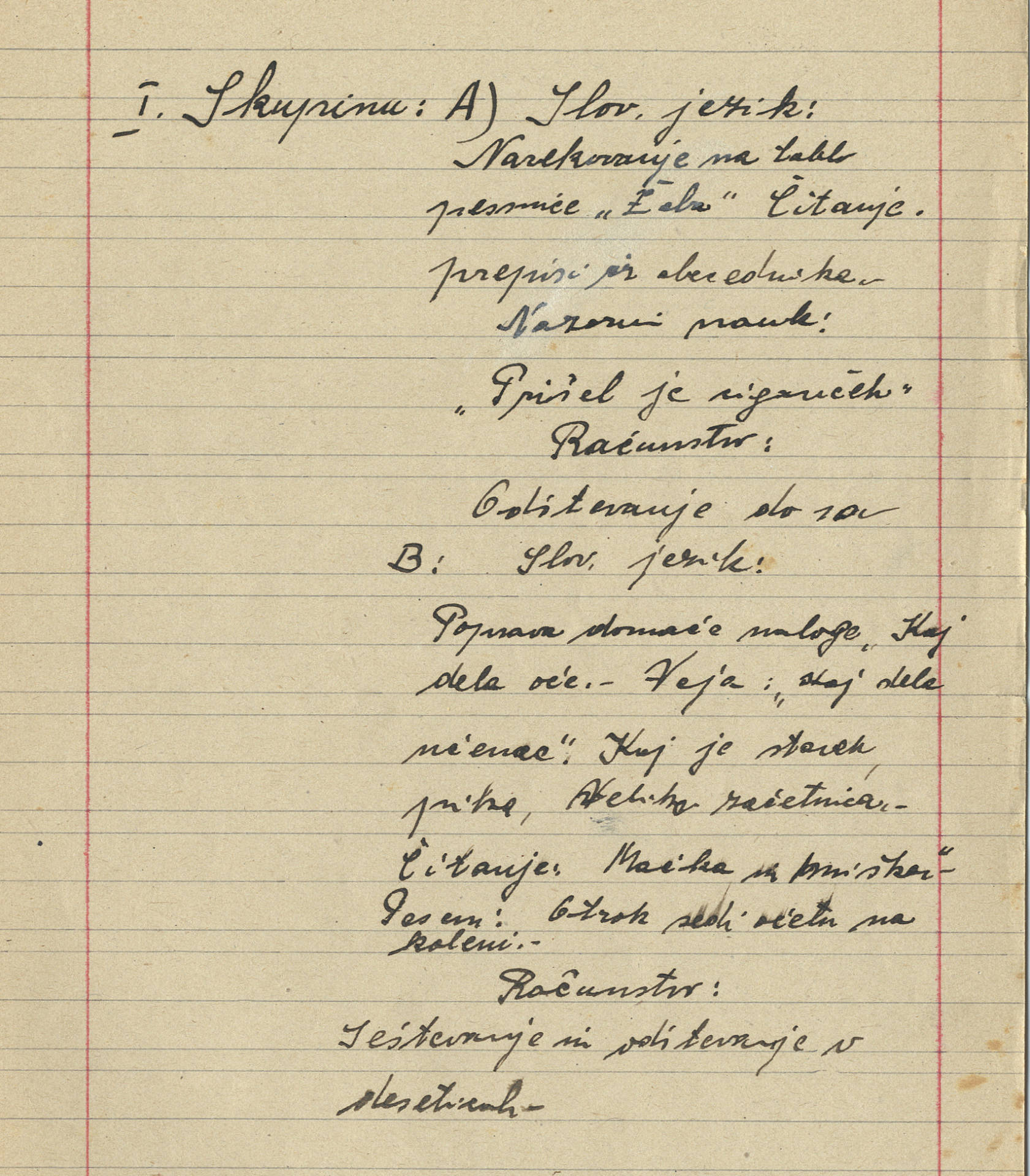 Lesson plans.
Lesson plans.
 Lesson plans.
Lesson plans.
 Slivje, 1944 – schoolchildren with their teacher Roza Firm.
Slivje, 1944 – schoolchildren with their teacher Roza Firm.
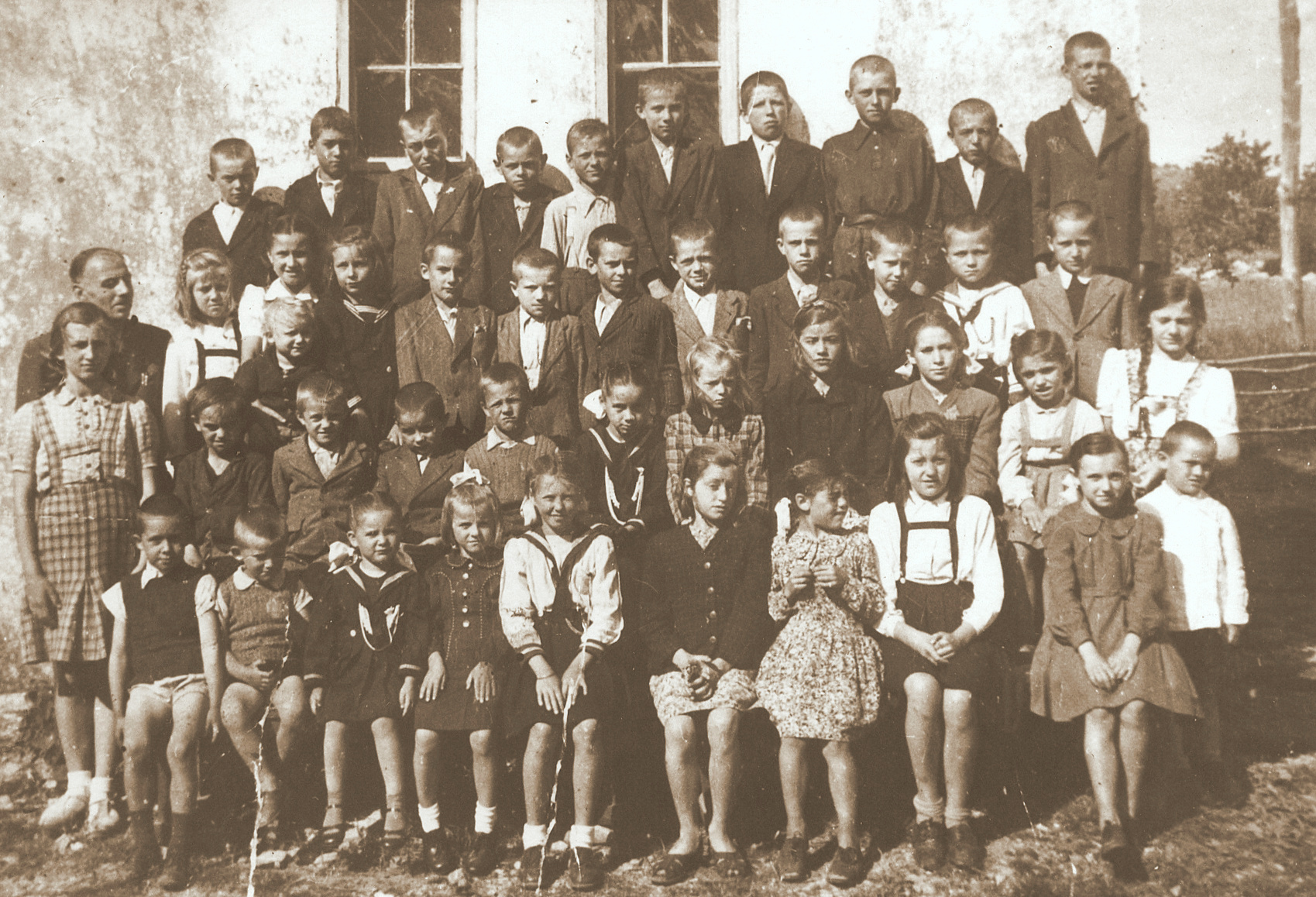 Škoflje, May 1944 – schoolchildren with their teacher Mirko Dujc.
Škoflje, May 1944 – schoolchildren with their teacher Mirko Dujc.
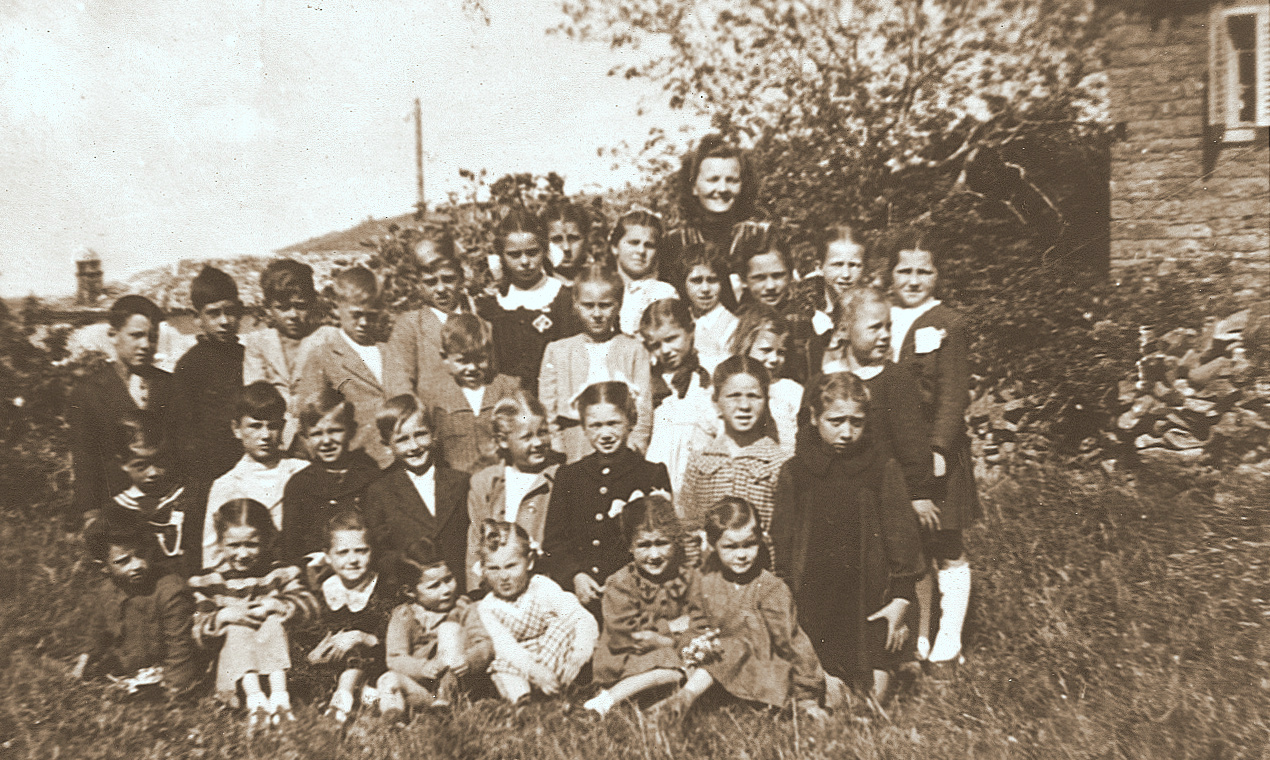 Schoolchildren with their teacher Hermina Ferluga in Plavje in 1944.
Schoolchildren with their teacher Hermina Ferluga in Plavje in 1944.


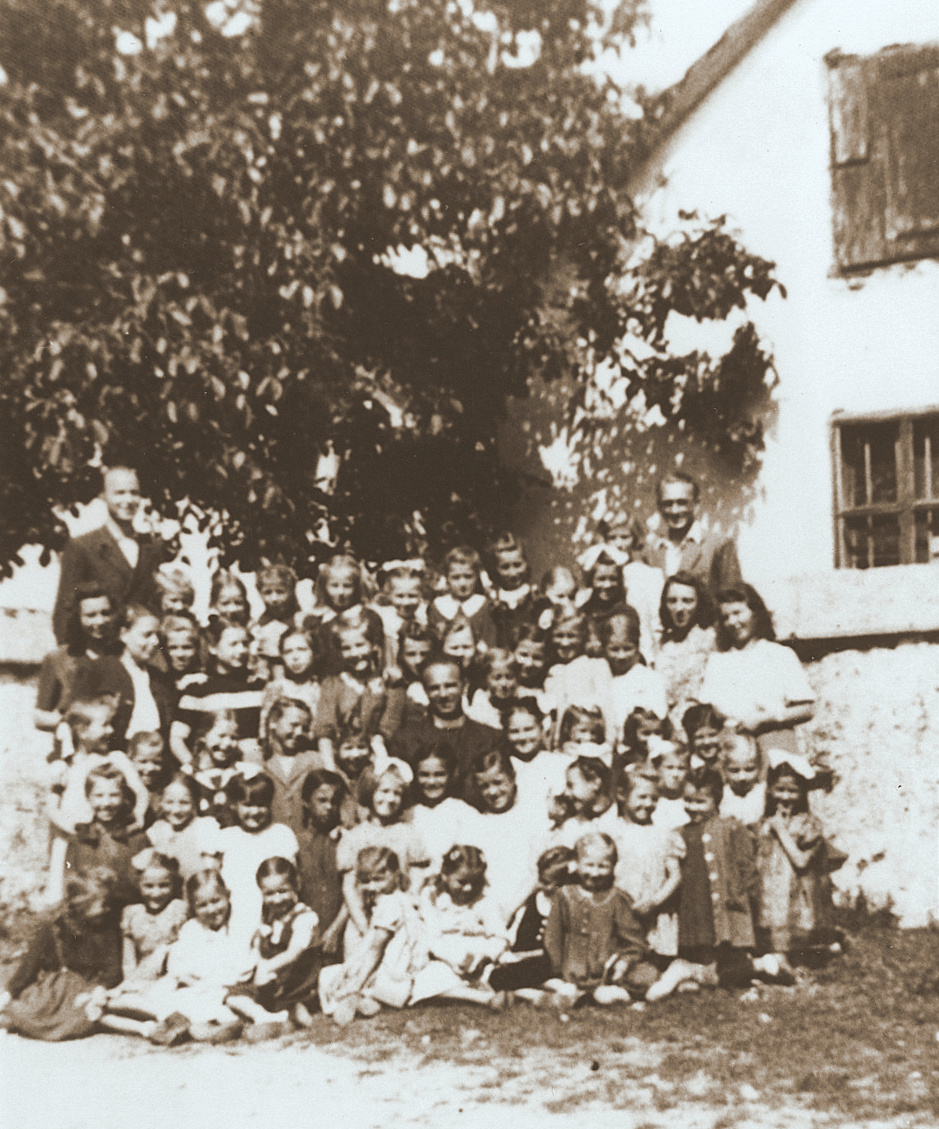
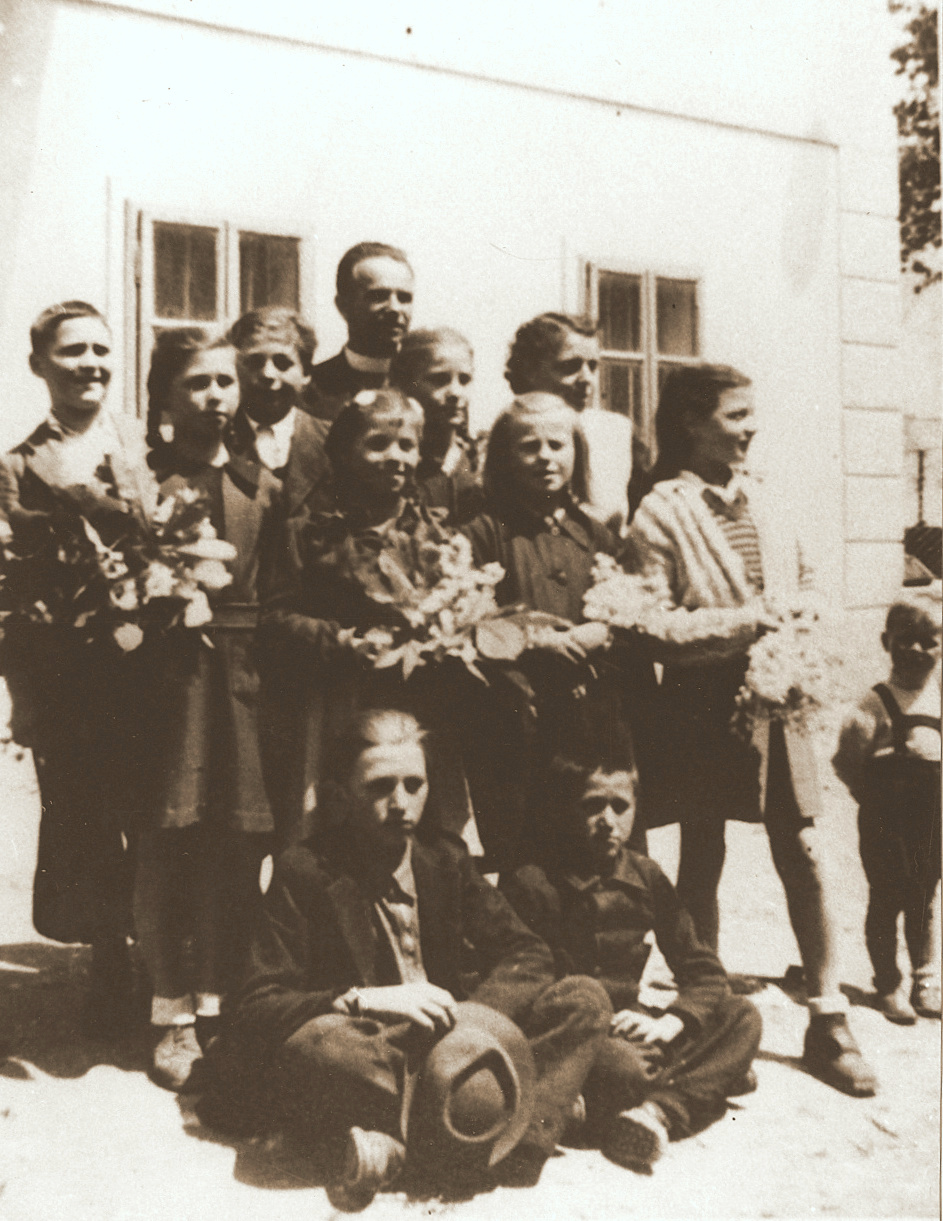

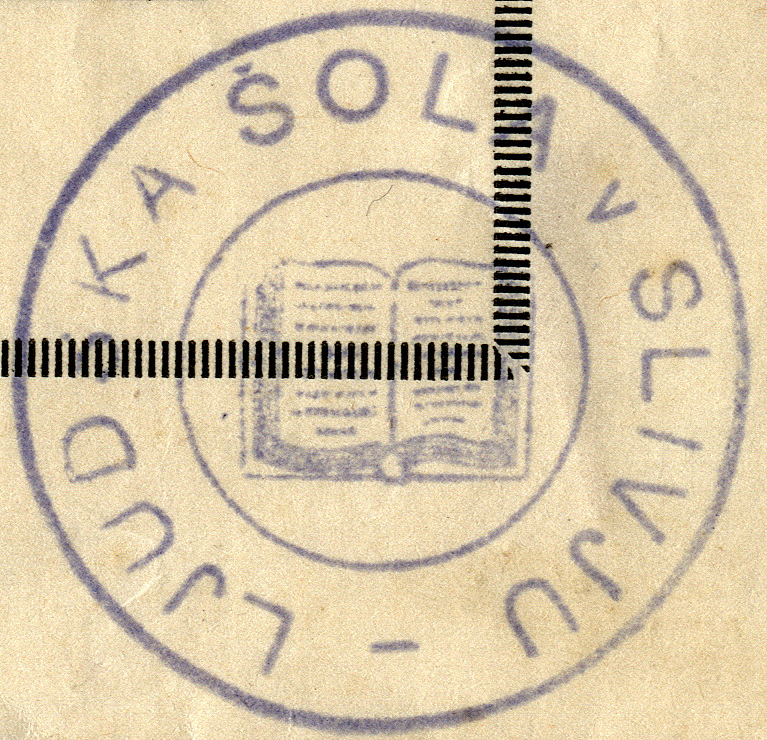
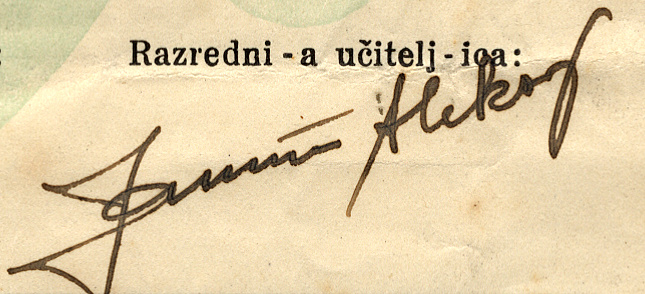
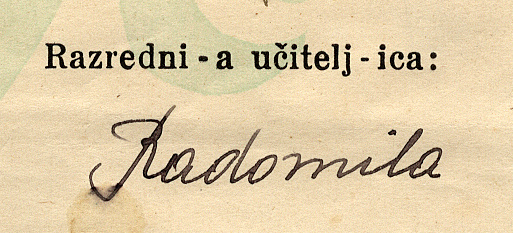
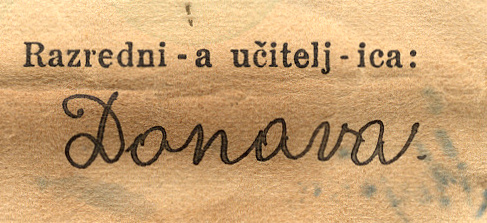
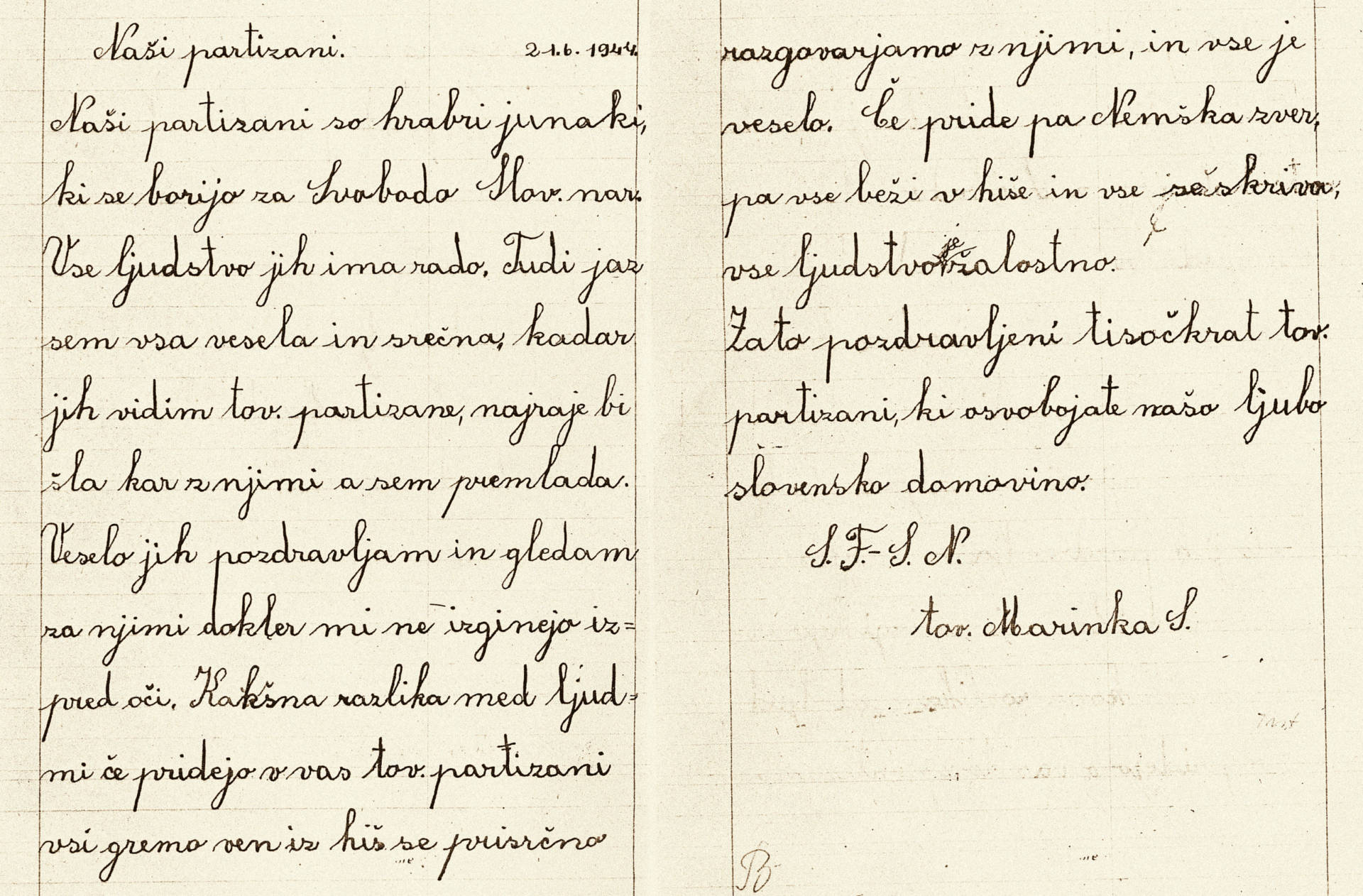 Pupils’ essays.
Pupils’ essays.
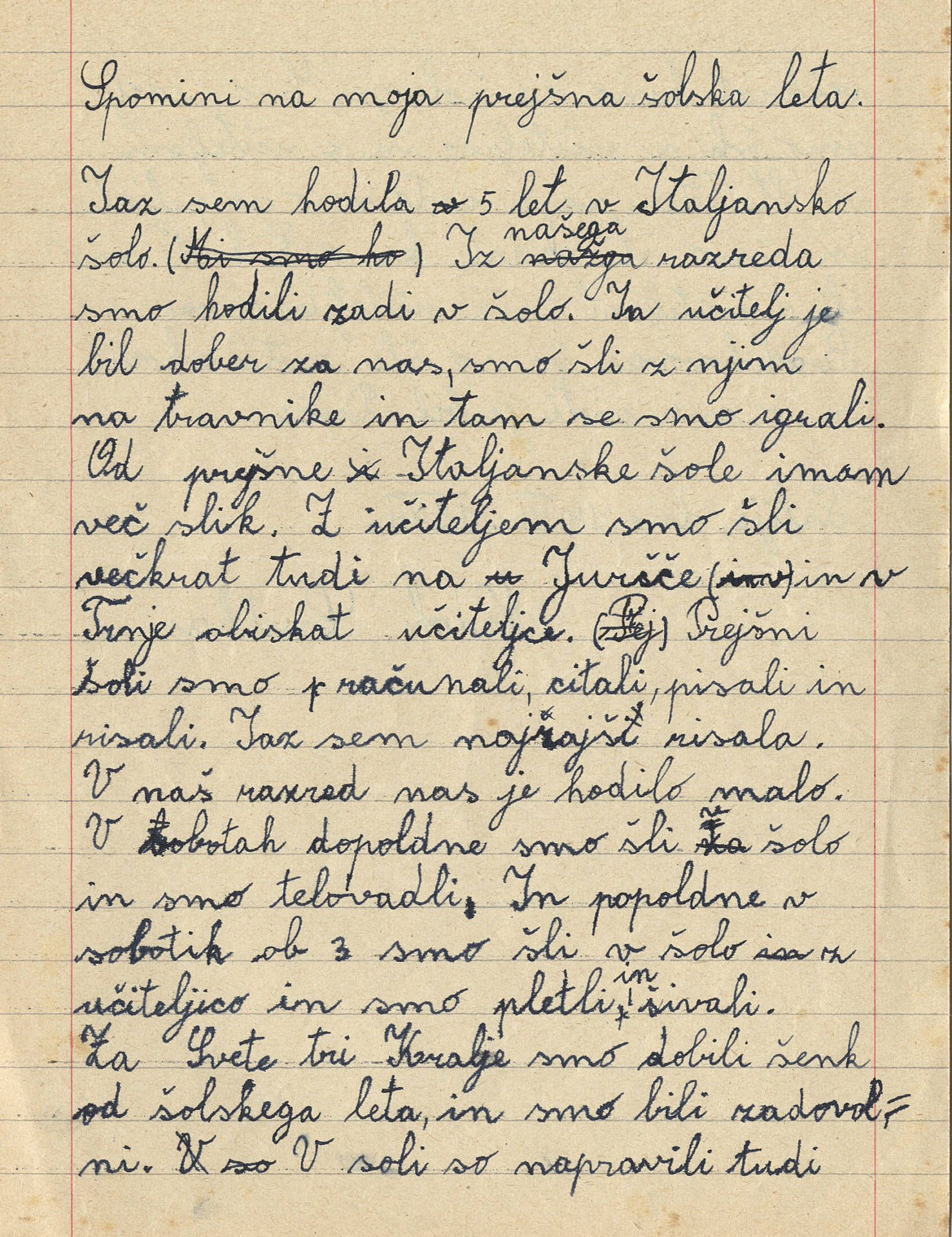 Pupils’ essays.
Pupils’ essays.
 Pupils’ essays.
Pupils’ essays.
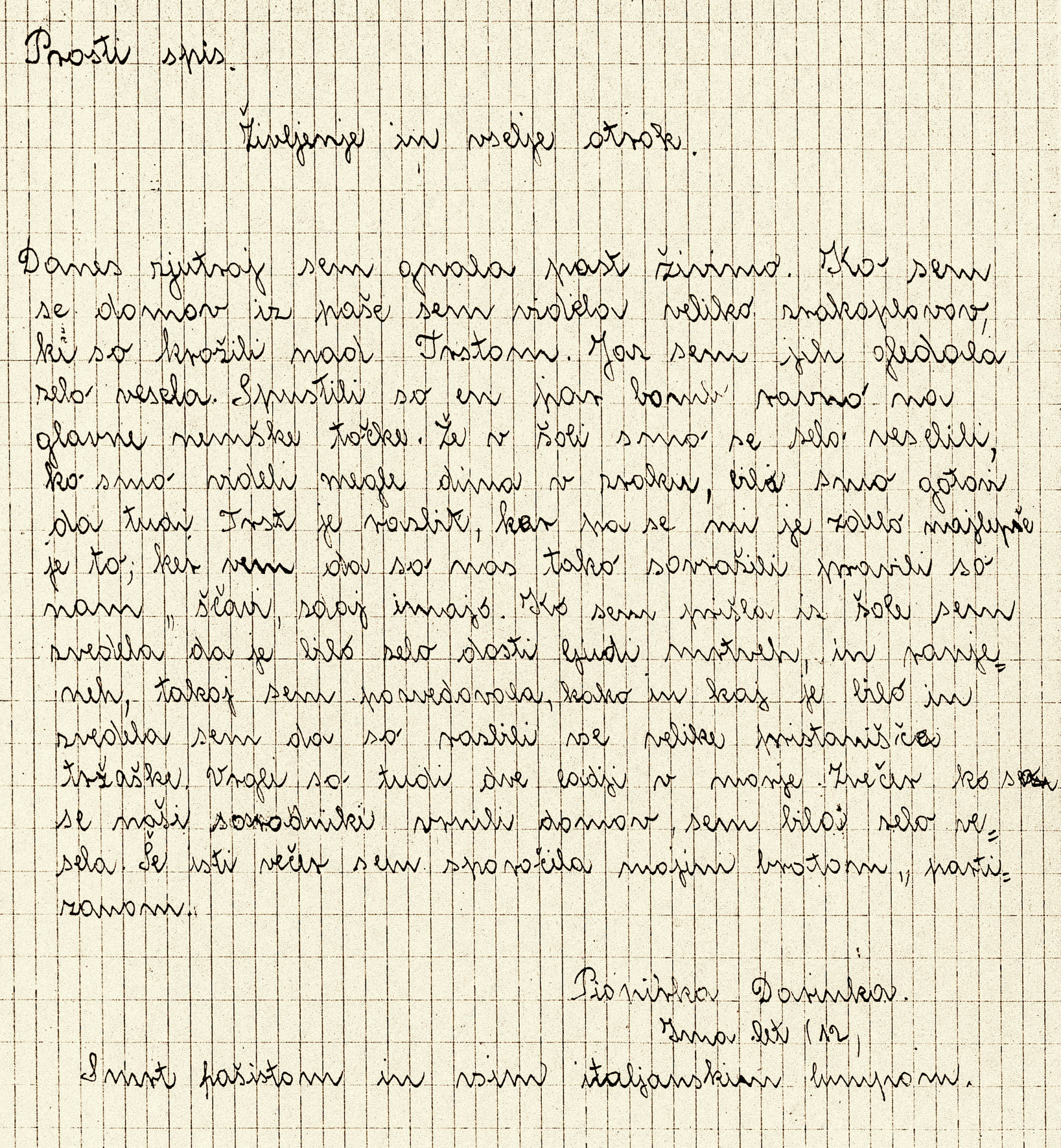 Pupils’ essays.
Pupils’ essays.
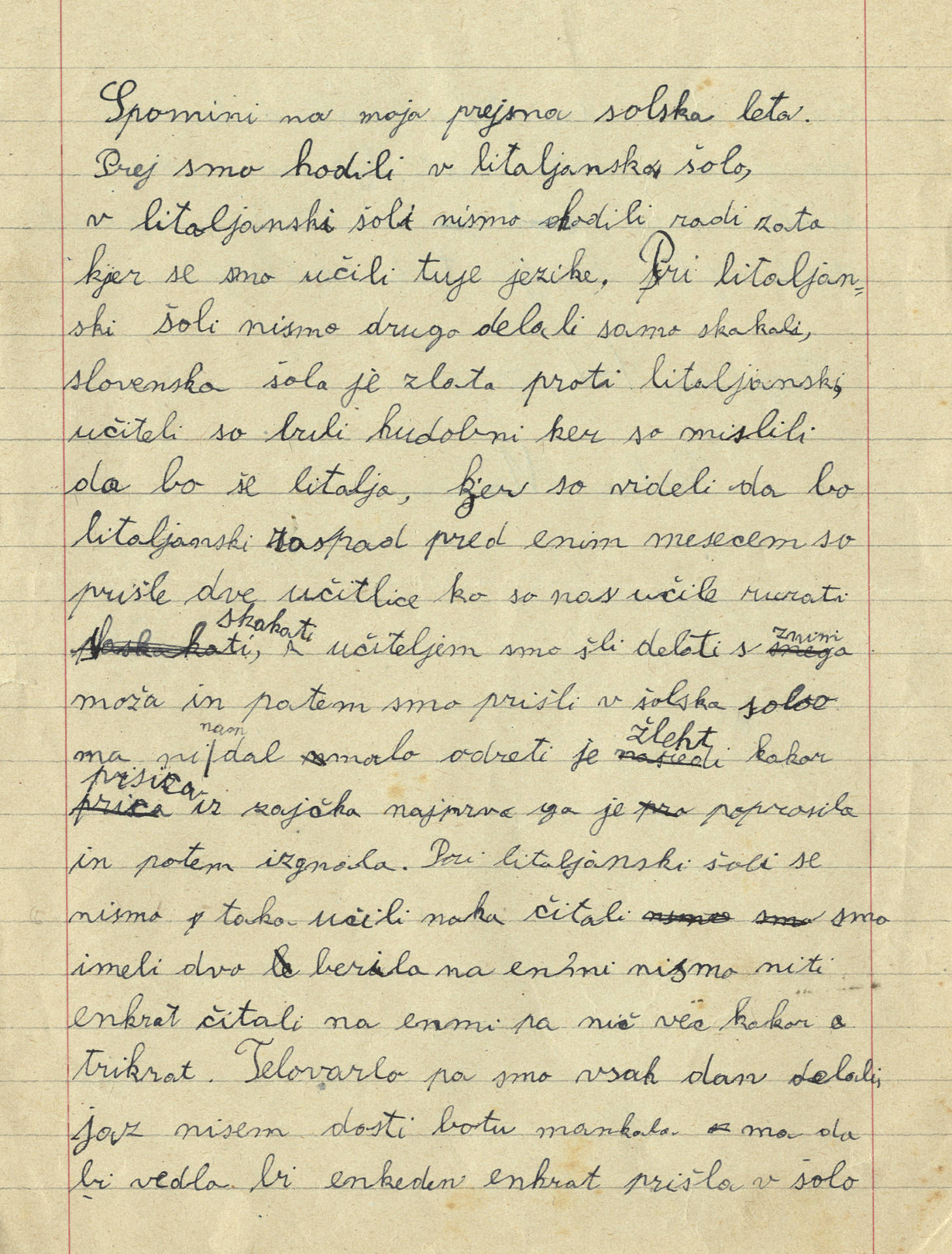 Pupils’ essays.
Pupils’ essays.
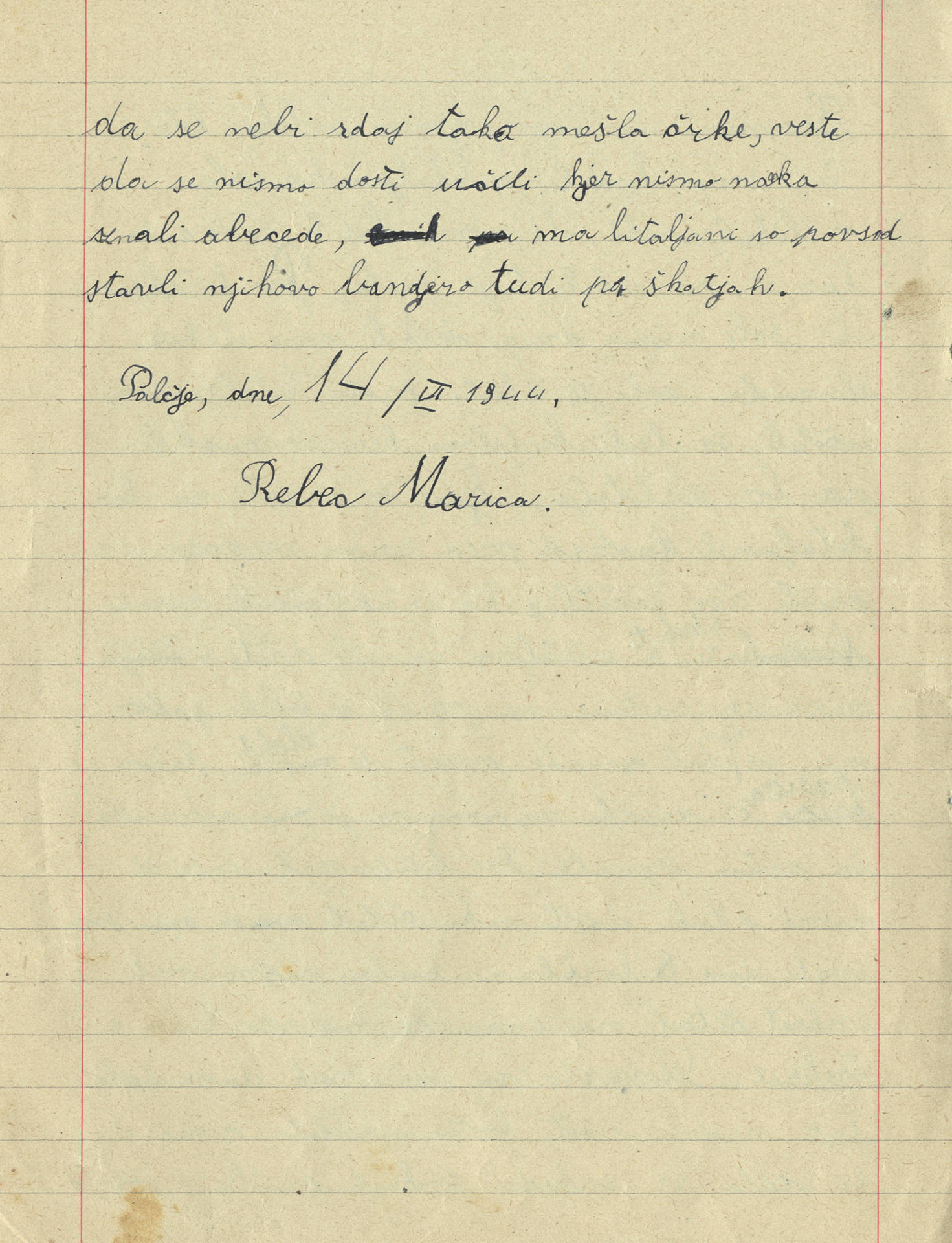 Pupils’ essays.
Pupils’ essays.
 Slivje, 1944 – pupils with their teacher Fr Viktor Berce.
Slivje, 1944 – pupils with their teacher Fr Viktor Berce.
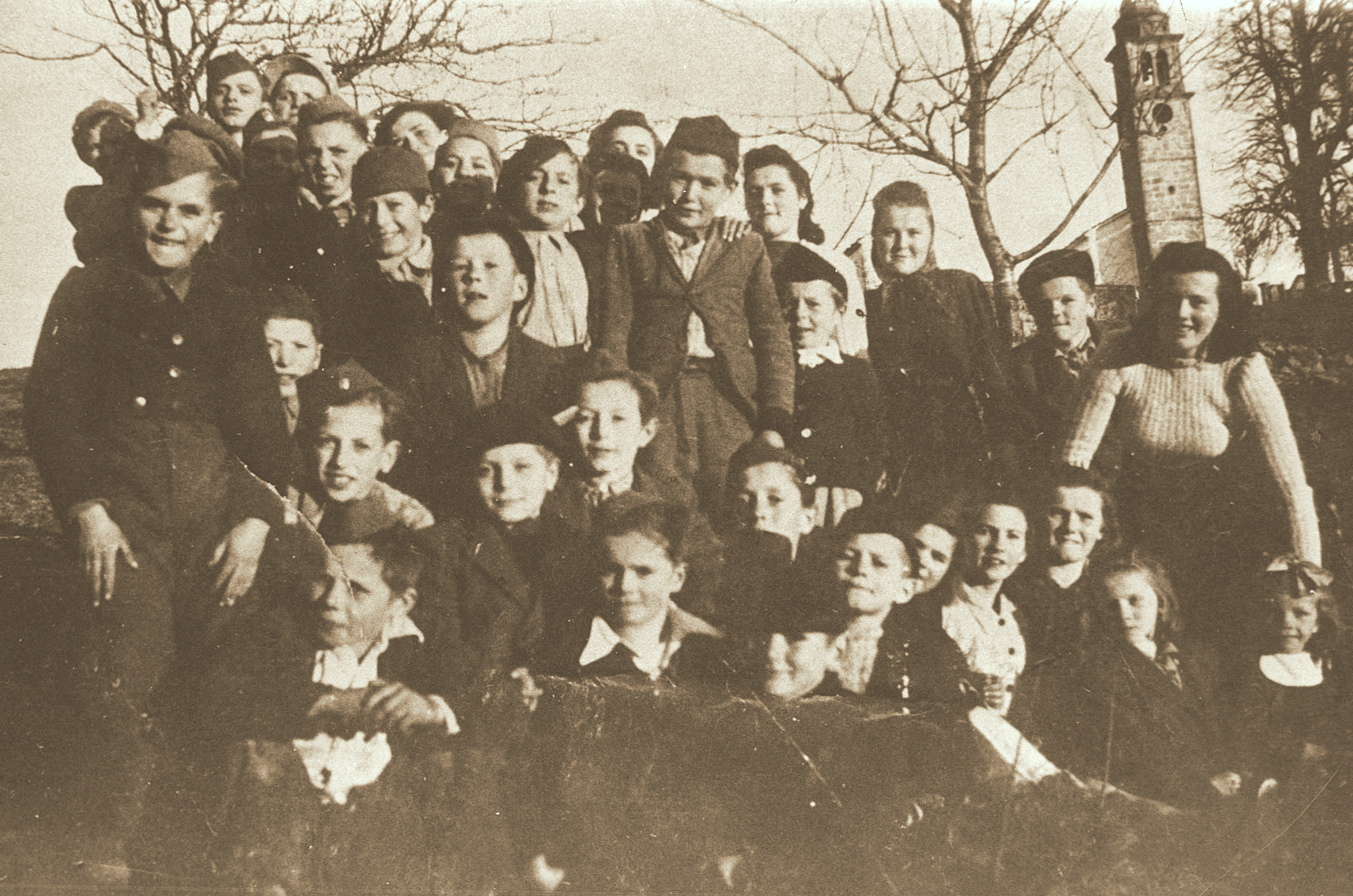 Pregarje, spring 1945 – pioneers with the leader of the village pioneer organisation Danica Bubnič.
Pregarje, spring 1945 – pioneers with the leader of the village pioneer organisation Danica Bubnič.
 Partisan schoolteachers from the Ilirska Bistrica area pictured in Trieste in June 1945.
Partisan schoolteachers from the Ilirska Bistrica area pictured in Trieste in June 1945.